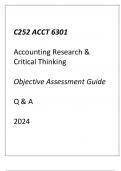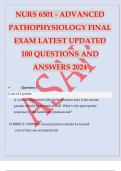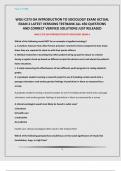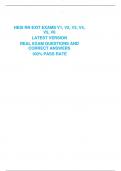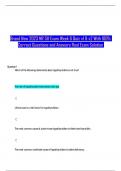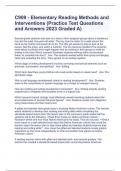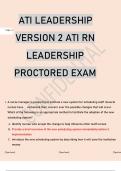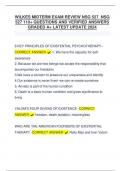Exam (elaborations)
(WGU C252) ACCT 6301 Accounting Research & Critical Thinking Objective Assessment Guide Q & A 2024.
- Course
- ACCOUNTING
- Institution
- Western Governers University
(WGU C252) ACCT 6301 Accounting Research & Critical Thinking Objective Assessment Guide Q & A 2024.(WGU C252) ACCT 6301 Accounting Research & Critical Thinking Objective Assessment Guide Q & A 2024.
[Show more]
